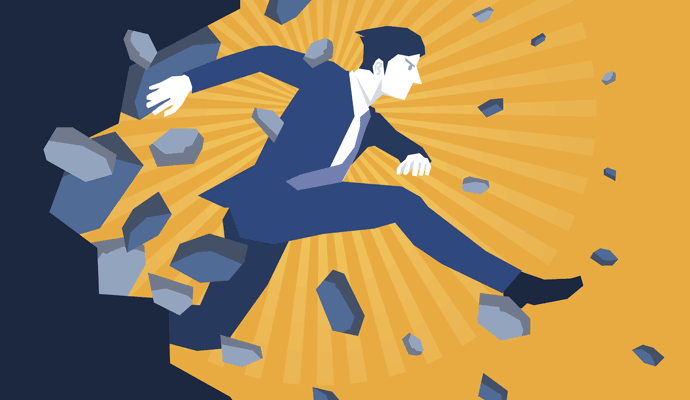How to Accelerate Learning on Your Team
The key to designing better, faster feedback systems.
Some years ago, I met an ERP implementation team that was able to deliver tangible business results in just six months, where eight other teams at the same company had stalled. The successful team’s secret? Early on, its members had given up on planning, and instead focused their time on putting live customer orders through a prototype of the software. Week after week, they met with the pilot customer team, listened to their feedback, and iterated on the design. “One day, we realized we had gone live,” said one ERP team member. “The actual cutover was a nonevent, because things were going so well.”
Many leaders want to accelerate learning on their teams. They know that in a knowledge-driven economy, continuously developing new competencies is the key to sustainable advantage. But in practice, there never seems to be enough money or time. Why is it so difficult to get our teams learning at scale? In my experience, the central challenge is that leaders tend to think of learning too narrowly — equating it with training, mentoring, or “constructive feedback” during performance reviews. But all of these are inputs that may or may not correlate with the results we want to create.
By contrast, we should be mastering how we generate outcomes. And that is a team sport. As Peter Senge wrote in The Fifth Discipline (Doubleday Business, 1990), a learning organization is one in which “people continually expand their capacity to create results they truly desire.” When we view learning in this broader sense, we build feedback right into the system as an integral part of the work. If you want to accelerate learning on your team, first engage them in a meaningful challenge, then design a feedback system that enables them to learn naturally, every day. Here are six suggestions for how to get started:
Leaders tend to think of learning too narrowly — equating it with training or mentoring.
• Shorten the loop. According to scholars such as David A. Kolb and Walter Shewhart, real-life learning occurs in a loop. Like scientists, your team needs to be able to form an idea, run an experiment, check whether they moved the needle, and reflect on what to take away. Learning stalls when we don’t close this loop quickly enough. To speed the time to “aha,” try making feedback more timely and systematic. For example, agile software developers and design thinkers shorten the loop through rapid prototyping. With statistical process control, operators track key metrics hour by hour and respond in real time to problems by adjusting machines or scheduling maintenance.
• Think like an architect. Experts in designing public places think about how space itself can help direct traffic flows. Similarly, the ideal feedback system channels timely, useful information directly to those most able to act on it. Like good signage, it should be vivid and tangible — which is why lean practitioners insist on low-tech “visual controls.” For example, one leader I worked with drastically shortened delivery times by having high-level professionals review and correct their own errors, rather than having junior staff handle fixes for them. By contrast, data that is too aggregated, delayed, or abstract is less actionable, because employees cannot connect the dots to their work.
The ideal feedback system channels timely, useful information directly to those most able to act on it.
• Look upstream. Do your teams know whether they are delivering on key promises to customers or other stakeholders? Most companies don’t have real-time data on how well they are doing at critical “moments of truth” with their customers — precisely when it is most difficult to deliver consistently. Shining a light on these upstream drivers can accelerate your team’s learning and improve downstream financial results. For example, an apartment company found that annual renewal rates were driven by the customers’ initial move-in experience. The company then developed measures to provide rapid feedback about the quality of each customer’s move-in experience, improving execution, renewals, and financial performance.
• Gather feedback on how the system is doing, rather than rating individuals. Organizations miss important insights when they evaluate individuals in isolation, rather than looking at how the system is operating as a whole. This involves shifting to a process view and challenging your assumptions about what is causing the problem. Kaoru Ishikawa’s fishbone diagram can help expand your thinking — the potential causes branch out from the central problem. In today’s continually shifting organizations, you may find the key lesson is knowing others’ roles, agreeing on handoffs, harmonizing methods, or clarifying specifications.
• Create forums for team learning. When you create concrete processes for sharing knowledge, conducting after-action reviews, reflecting on data, or exploring root causes as a team, everyone learns. As Étienne Wenger found in his research on “communities of practice,” these forums allow your top performers to push their creative problem-solving skills, while your novices learn from peer-to-peer interaction with experts. For these to work, it is critical to shift from judging people’s competence to thinking together about what works, in an environment of openness and support.
• Evolve your system over time. As a favorite professor of mine once said, adding data is like lowering the water level in a river — it surfaces the rocks. Rather than attempting to tackle all of the issues at once, he recommended chipping away at them gradually. It takes time for people to trust the data, diagnose underlying issues, and address them. And at the same time, they still have to run day-to-day operations.
There are many good frameworks to guide you in transforming your company’s ability to learn, and these six steps are a good place to begin. When you approach learning as an integral part of your team’s work and design systems accordingly, you will be simultaneously increasing the speed of your decisions, deepening understanding of your business, and strengthening your competitive advantage. We naturally think to do this when designing technology — building in sensors, artificial intelligence, and other feedback mechanisms that allow machines to learn and adapt in real time. And as the ERP team above demonstrated, the same process works in innovating for customers. Why not set up the systems that guide the way our people work to be just as agile?





